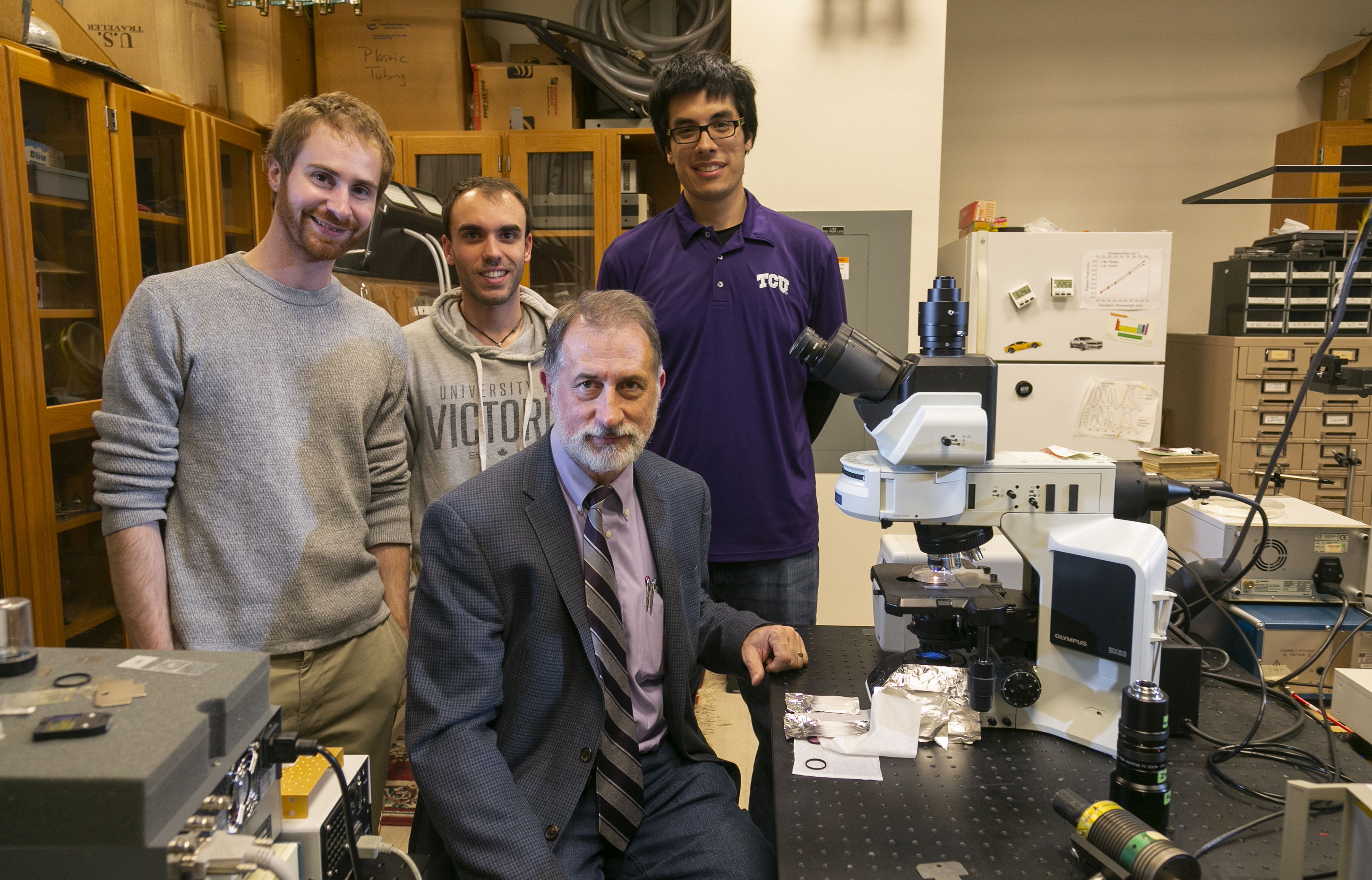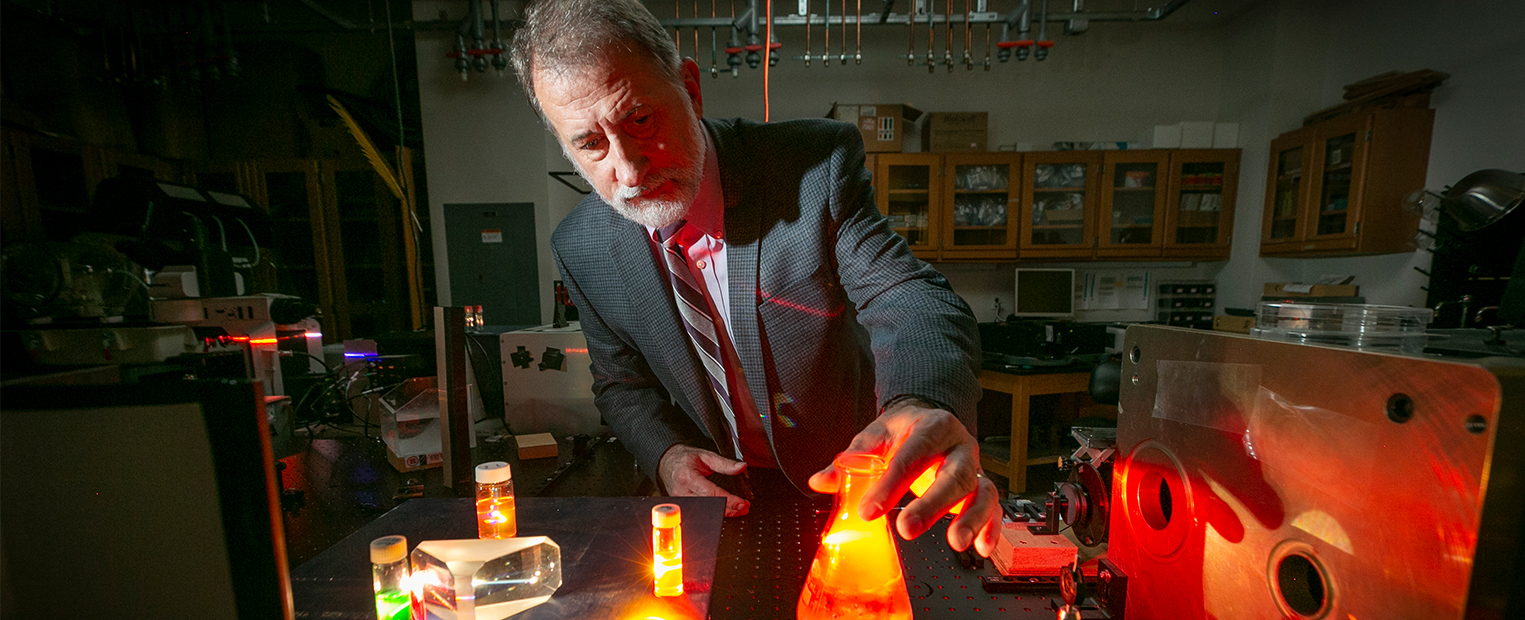Zygmunt “Karol” Gryczynski, TCU’s W.A. “Tex” Moncrief, Jr. Chair of Physics, began studying fluorescence spectroscopy in the ’80s while living in Poland. At that time, fluorescence was an exotic technology. With the push to get rid of radioactivity, fluorescence became the only technology feasible to substitute radioactive assays. In early 2000 when the human genome was published, and many new probes (dyes) were developed, the fluorescence community realized the pivotal role it played. A significant effort has been made to utilize fluorescence in biomedical diagnostics, imaging, environmental sensing, and many other applications. Being well established in fluorescence technology, Gryczynski got involved in probe development and their application to cancer imaging, cancer detection, DNA detection, protein detection, and diagnostic assays, such as the COVID PCR test that is based on fluorescence. With TCU having one of the most advanced fluorescence labs in the world, Gryczynski shares how research being done on campus can lead to significant medical breakthroughs.
How can new technologies in physics, particularly fluorescence spectroscopy, assist in detecting diseases such as cancer?
Visible and near-infra light is harmless to humans. In these ranges of light (red and near-infrared), tissue is fairly permeable. Thus a big effort has been made in developing red dyes and probes for detecting and imaging cancer and other diseases that can be detected using fluorescence in the previously said region of light. Collaborating with various cancer researchers in UNTHSC, I significantly contributed to the field of cancer detection by developing various probes, delivery mechanisms, and practical detection. More recently, I got involved in the study of mucus formation—a crucial step in diseases like cystic fibrosis and asthma. It’s also a primary defense barrier against viruses and bacterias present in environment. This is especially important now with emergence of COVID (SARS) type viruses. In collaboration with the University of Montreal and TCU Department of Chemistry, we have developed a new approach for monitoring mucus viscosity on cellular and subcellular levels.
Are there currently any drawbacks in utilizing fluorescence spectroscopy as a diagnostic technique?
As with any detection technology, fluorescence sensitivity (detection limit) is dictated by the background level (signal contribution of natural blood and tissue components that are also fluorescent). Unfortunately, cells and tissues are very dirty systems in the greater scheme of things. They contain various food and metabolic components that frequently overwhelm probe response. So, developing bright probes and creating highly sensitive fluorescence detection methods are crucial for further biomedical applications.
What are other medical or environmental applications for fluorescence spectroscopy?
Many fields utilize fluorescence as a detection method. Some recent “exotic” applications of fluorescence that I have been involved in are forensic applications of DNA based detection and environmental detection decomposition of plant materials.
A few examples of the various works that our lab is involved with are below.
- In collaboration with Forensic Laboratory at UNTHSC, we are developing fluorescence-based methods for detecting and localizing DNA traces in crime scenes. At the moment, our detection sensitivity is on the level of few human cells, perhaps the highest ever observed. The main goal is to develop technology that could be further evolved for other field applications like human trafficking etc.
- In collaboration with the Department of Geology at TCU, we are developing a novel method for monitoring organic matter from (un)charred plant materials.
- In collaboration with ExxonMobil, we are looking into discovering a new fluorescence based approach for continuous monitoring of chemical processes (characterization of silica-supported metallocene catalysts).
What specific research is currently being done at TCU in this field, and what are ways in which the research could evolve more quickly?
Our Fluorescence Spectroscopy Laboratory at TCU is one of the best equipped laboratories for time-resolved fluorescence spectroscopy in the world. We are continuously collaborating with multiple institutions in the United States and the world. In addition to the research projects mentioned above, the recently developed technology of direct triplet state excitation (phosphorescence) is worth mentioning. We were the first lab to report this new phenomenon last year. Another exciting project has started this past year. We are working with a recent scholar from the Kosciuszko Foundation on using fluorescence detection to study a new type of antifungal drug.
Learn more about TCU’s Department of Physics and Astronomy and its biophysics research.

